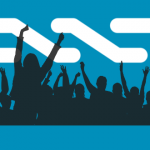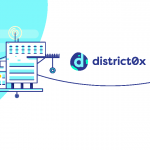PROJECT OVERVIEW.
Quark is a peer-to-peer digital currency that uses the most advanced and latest algorithms in cryptography, making it more secure than Bitcoin and other alt-coins.
Not only that, Quark is a CPU mined only digital currency. Server farms and ASIC mining rigs don’t get the advantage mining Quark coin. Anyone with a CPU can mine for Quark Coins and take part in the rewards & not just the companies with advanced hardware and capital.
BACKGROUND.
Quark was launched in 2013 with the belief that the control of money should not be in the hands of the few, but in the hands of the many. 98% of Quark supply was distributed in the first 6 months since inception. This created initially an unbalanced ratio between early and late miners, however this was intentional designed in order to create better distribution once the initial miners sold out their Quarks.
Unlike Bitcoin which holds favoritism towards early adopters, Quark strategy of fast emission of coins allows late adopters to have a buying power similar with the early adopters due to the lack of market price influence from big mining consortium which had left a negative mark around Bitcoin.
HOW IT WORKS.
In terms of security, Quark has a different hashing algorithm with 9 rounds of hashing from 6 unique hashing functions.
The proof of work algorithm in any (Bitcoin-like) cryptocurrency is the function that miners must compute in order to create valid blocks; in Bitcoin, for example, a valid block must have a SHA256 hash starting with 0000000000000000000 (that’s fifteen hexadecimal zeroes). Because SHA256 is essentially a pseudorandom function, the only way to create such a block is to keep trying, making an average of 260attempts, before you eventually create a block that is valid.
Artificially making block creation so hard is a security measure; it ensures that attackers will not be able to flood the network with illegitimate blocks, and therefore a fraudulent transaction history, without having more computing power than the entire legitimate network combined.
The proof of work algorithm in Quark is more complicated than Bitcoin, but not excessively so; instead of using just one hash function as Bitcoin does, Quark uses six: BLAKE, Blue Midnight Wish, Groestl, JH, Skein and Keccak. The six algorithms are implemented in series, with nine steps; three of the steps randomly apply one of two out of these six functions depending on the value of a bit.
Quark multiple hashing algorithms are intended to keep the blockchain safe against brute-force attacks which might be possible in the future with Quantum computers, and to prevent specialized mining hardware from easily obtaining an advantage over CPU miners; bitcoin mining is currently done in a majority by dedicated mining companies, defeating the purpose of 1 vote per CPU that was originally envisioned by Bitcoin’s creator.
Unfortunately, although Quark coin tries to make a number of bold and daring improvements on the Bitcoin parameters, it arguably fails in its objectives on almost every count. One thing that must be understood about hash functions is that, unlike most public-key algorithms, hash functions are often very opaque in their implementations, relying on complicated permutations and arbitrary substitutions and transforms rather than elegant mathematics involving modular exponentiation or elliptic curve points.
The design of hash functions attempts to maximize properties known as diffusion, confusion and nonlinearity – essentially, professional cryptographers literally come together and try to figure out how to make a function as opaque and jumbled up as possible so that no one, including the cryptographers themselves, can figure out what’s going on inside. As a result, hash functions tend to naturally have many built-in redundancies, and it shows.
When the MD5 hash function was cracked, it went down slowly. In 1993, researchers first found a “pseudo-collision” – two changes to an internal parameter called an initialization vector that lead to the same output. In 1996, researchers found a “collision” – two inputs that produce the same output – to one specific internal component of MD5, the compression function. It was not until 2004 that these insights were converted into a full collision attack on MD5 itself. Even today, MD5 is actually not fully broken; although collisions, finding X and Y such that MD5(x) = MD5(y), can be done in only a million computational steps, pre-images, or finding X such that MD5(x) = Y for a prespecified Y, still take over 2100steps (although no longer quite the initial 2128.
Hence, hash functions like SHA256 are already highly redundant and black-swan proof. In fact, if a critical black swan event does occur, it will likely be something like P=NP or quantum computing that affects all hash functions at once.
The second application of Quark’s multi-hash mechanism is its resistance to ultra-efficient mining through specialized hardware. However, the combined hash function created by composing BLAKE, groestl and the other functions does not have any particularly special properties; it is simply a hash function which takes up nine times as many lines of code. Producing specialized hardware devices (i.e. ASICs) for mining it will certainly take nine times as much work, but once they exist they will be every bit as efficient as Bitcoin ASICs. They only do not exist now because there is not enough interest in Quark.
A better way to make an ASIC-resistant coin is to use so-called “memory-hard hash functions” – functions that take a large amount of memory, as well as time, to calculate, so devices that attempt to do the computation millions of times in parallel will need to have petabytes of memory on hand; Litecoin does this, as does Primecoin with its sieve-based prime number chain algorithm, albeit unintentionally.
HOW ADVANCED IS IT?
Quark protocol has been changed to a POW/POS hybrid. The hard fork will take effect starting with block 4937000 ~ 25 November 2017.
SIMILAR COINS.
Aurora Coin.
They issued an equal amount of coins to all icelanders.
Clams.
The CLAMs network was created with the widest digital value distribution in history. CLAMS were sent to all active users of the 3 most popular digital currencies. If you had Bitcoin, Litecoin or Dogecoin on May 12, 2014 then you probably have CLAMs waiting for you now!























